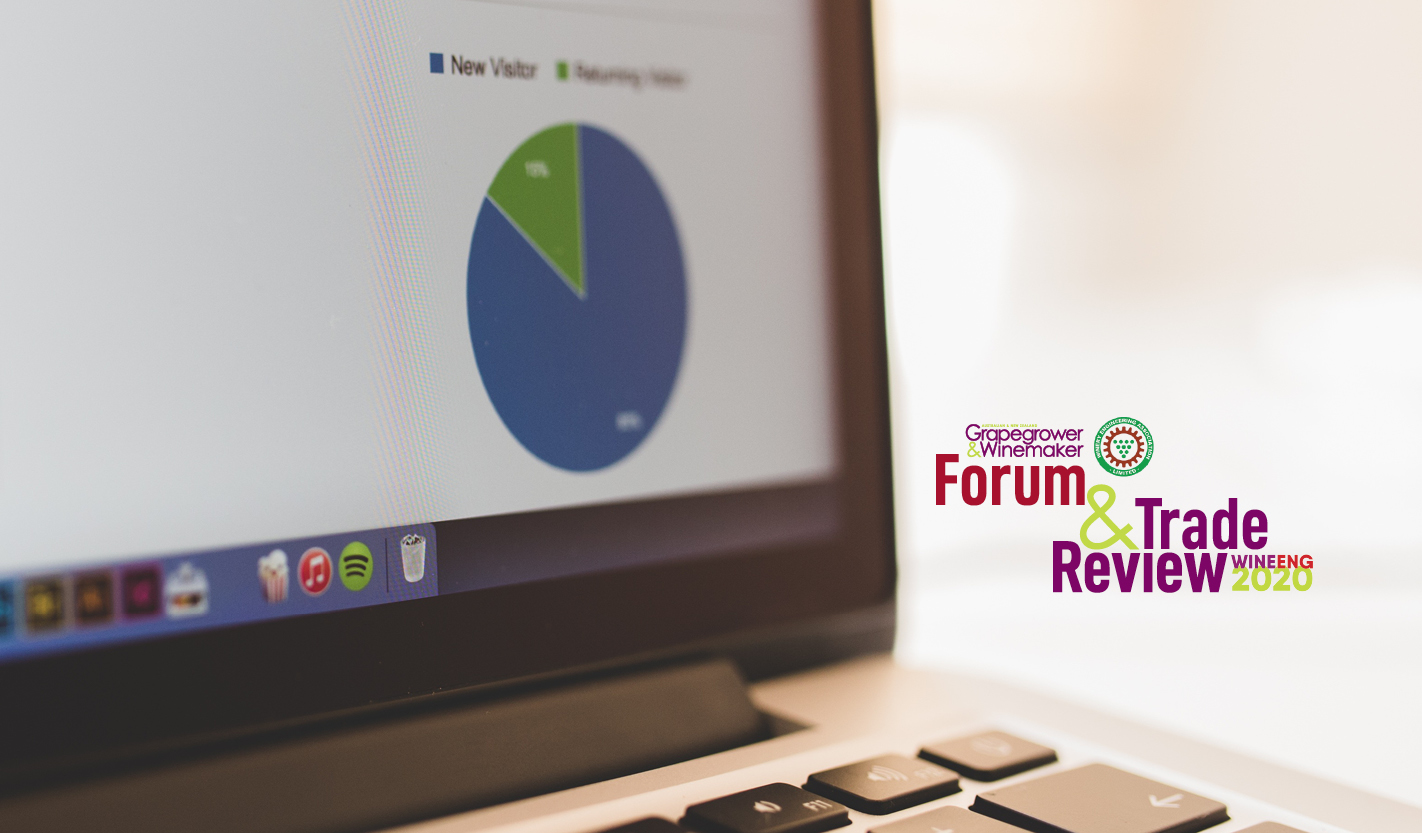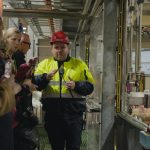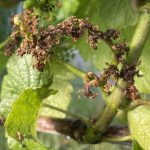COVID-19 has had little effect on purchase intentions, while automated tasks remain a desired goal for winemakers
In the lead up to the WineEng 2020 Forum and Trade Review, the WEA and Winetitles Media conducted a survey of winery personnel to ask about aspects of their operations. There were a total of 99 respondents who provided their input to the survey, revealing a range of findings related to capital expenditure intentions and the prevalence of automation technology in Australian and New Zealand wineries.
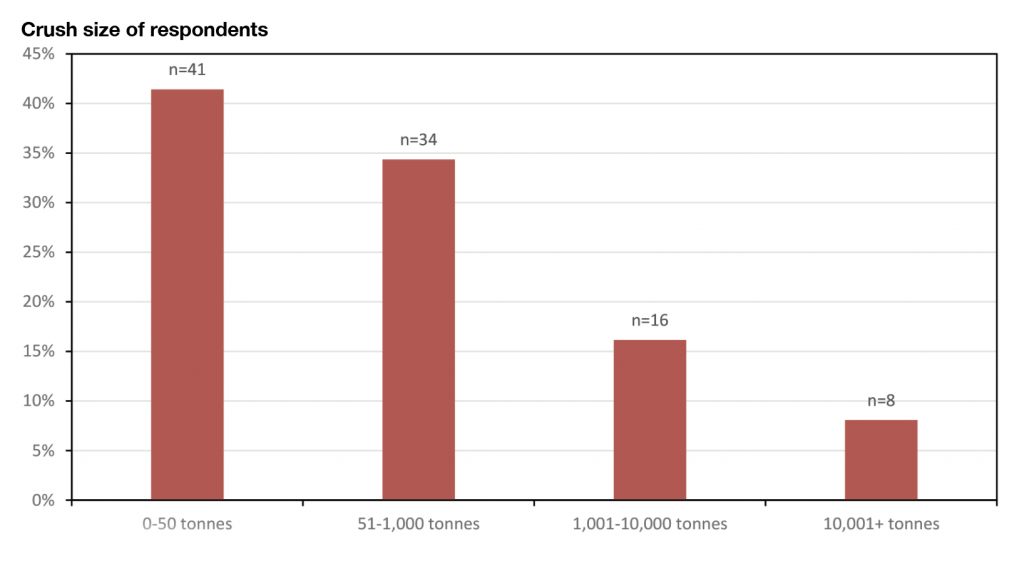
For the purposes of the survey, respondents were categorised into four groups, determined by the crush size of their wineries. Smaller wineries made up the largest proportion of responses, with 41% crushing 50 tonnes of grapes or less. Thirty-four percent crushed between 51-1000 tonnes, 16% had a crush ranging between 1001-10,000 tonnes, while 8% had a crush greater than 10,000 tonnes. This distribution is generally representative of the overall industry, which is comprised of many more small to medium sized wineries than larger volume producers.
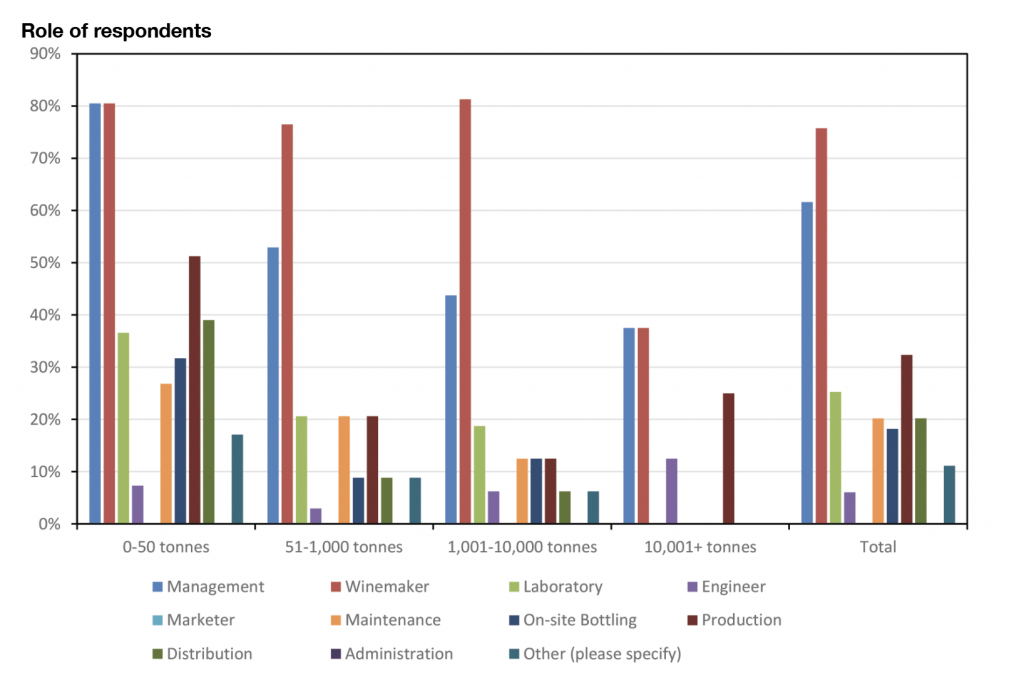
When it comes to their roles in the winery, 75% of those taking part in the survey identified as winemakers, with managers, production and laboratory staff the next largest groups. As might be expected, respondents from smaller wineries, more so than those from larger operations, tended to nominate multiple roles that they performed.
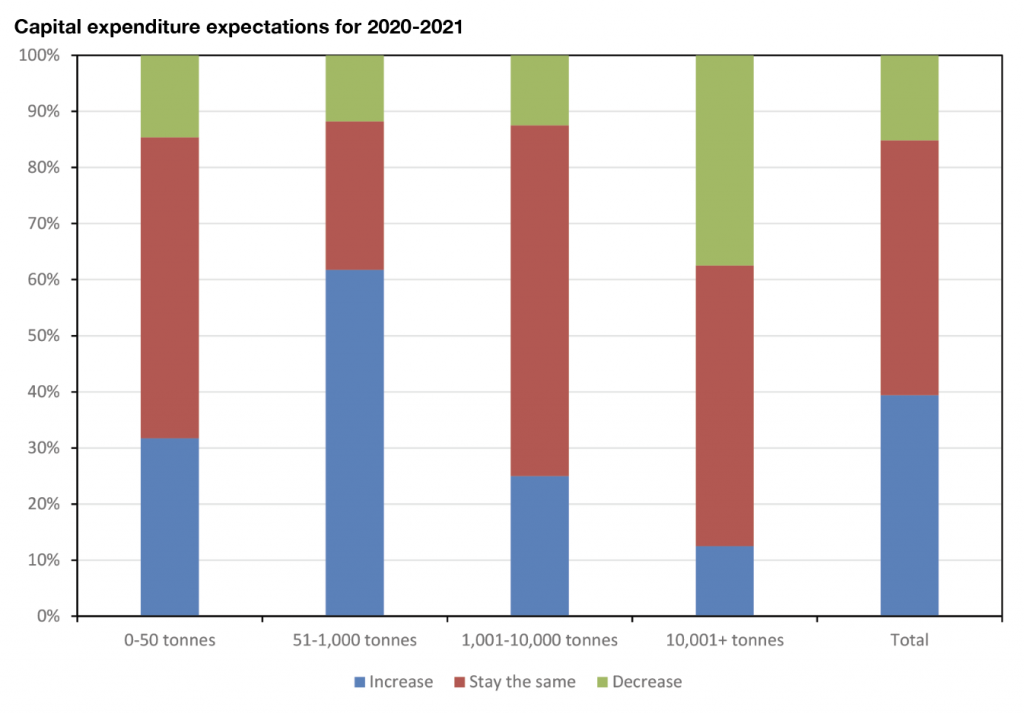
When asked about their capital expenditure intentions for 2020-21, 85% of wineries expect this to stay the same or to increase. This number was lower for the largest wineries, with only 12% expecting an increase, and 50% thinking expenditure would remain the same. Thirty-eight percent of the largest wineries expect a decrease – perhaps reflecting some of the export market uncertainty, although this data should be approached with caution as only eight large wineries responded to the survey.
Purchasing plans for winery equipment
Tanks are the most common item that respondents, across all size categories, plan to purchase in the next two years (44% of all those surveyed), with pumps, presses and laboratory and fermentation equipment the next most popular items.
Smaller wineries are less likely to be looking to purchase equipment overall, but this could simply be because they don’t require as much. Wineries in the 51-1000 tonne category are more likely to be buying presses (44%), pumps (44%) and refrigeration equipment (38%) more than other equipment. In the 1001-10,000 tonne size group, 31% of wineries say they’re likely to be buying refrigeration equipment, 31% say bottling lines, 31% say lab equipment and 31% say fermentation equipment. In 10,000t+ wineries, 38% are likely to be buying pumps, 38% automation equipment/software and 38% fermentation related products.
When it comes to items not currently on winery purchase lists, but that respondents say they would buy if they could afford them, refrigeration equipment and bottling lines were slightly ahead of other items. Filtration equipment was high on the ‘wish list’ for 51-1000 tonne wineries, possibly suggesting that some producers in this size range want a cross-flow filter but are not able to afford one.
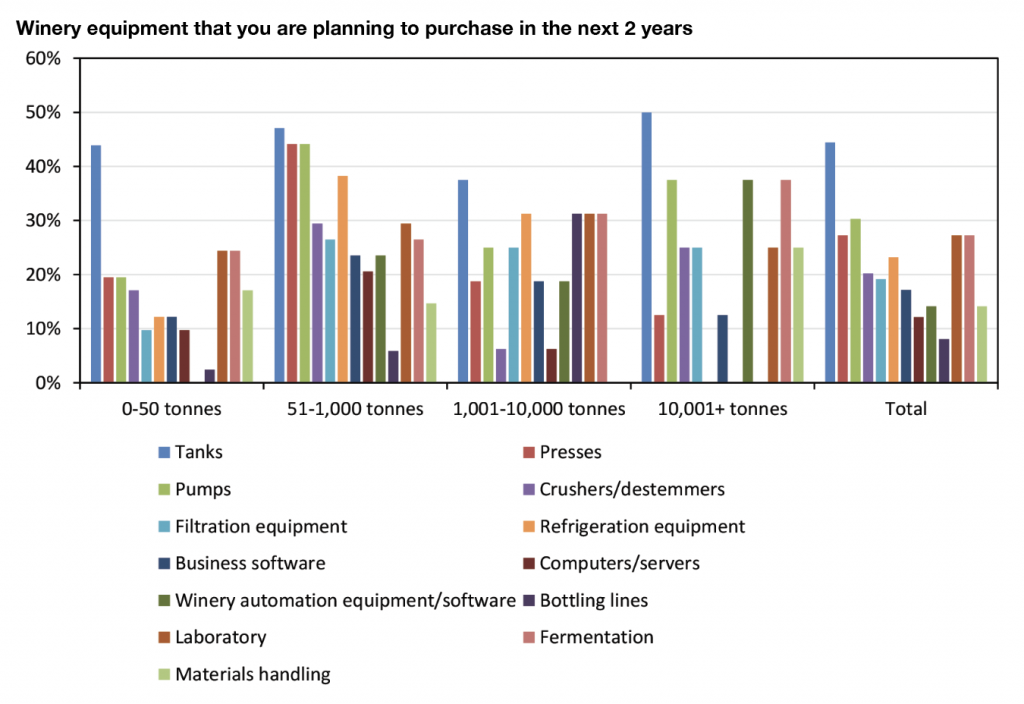
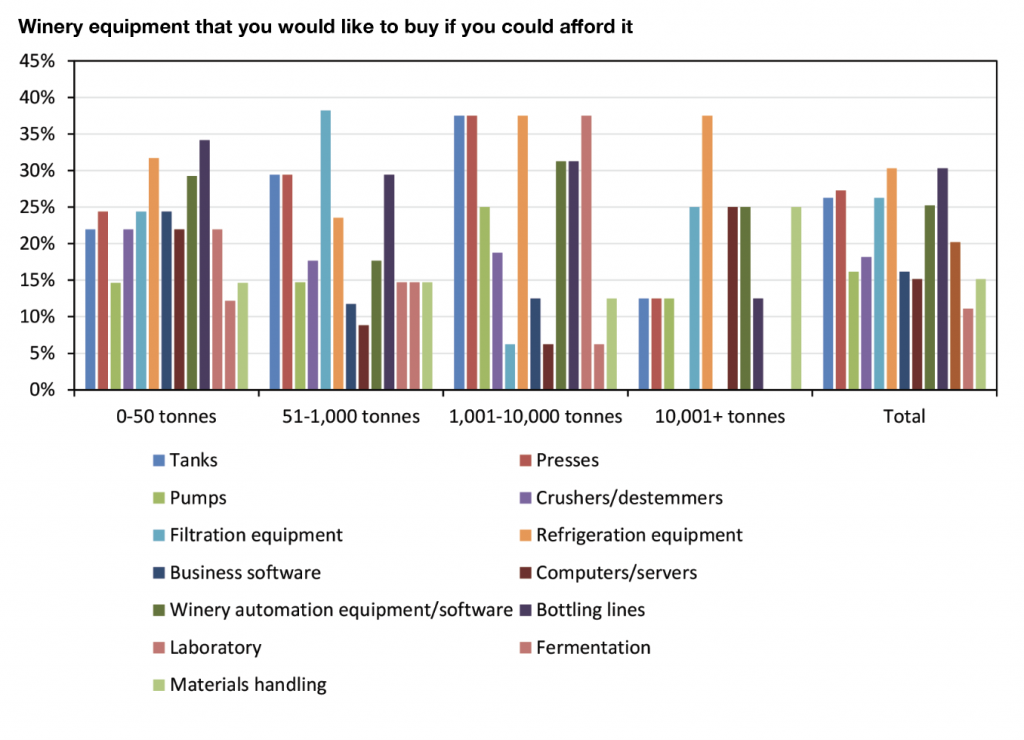
Extent of winery automation
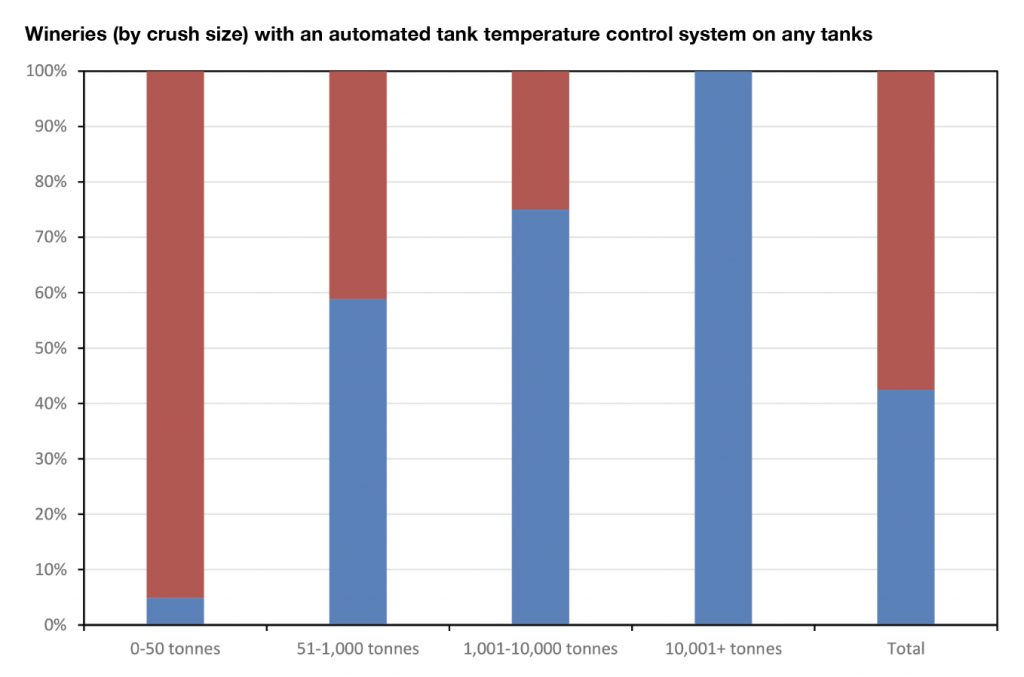
The survey asked if wineries have an automated temperature control system on their tanks. Such a system could, for example, be with a temperature probe in a tank to allow a desired temperature to be set, and with a brine/refrigerant valve to the tank jacket/spear that’s automatically opened and closed to cool the contents of the tank. Overall, 42% of respondents said that an automated tank temperature control system is utilised, with the likelihood of a winery having such a system increasing with the size of its crush. As the size of the winery increase, there was also a greater likelihood that there was the ability to view tank temperatures from a computer in the winery or remotely. However, 50% of the 10,001t+ sized wineries still couldn’t view these
temperatures remotely.
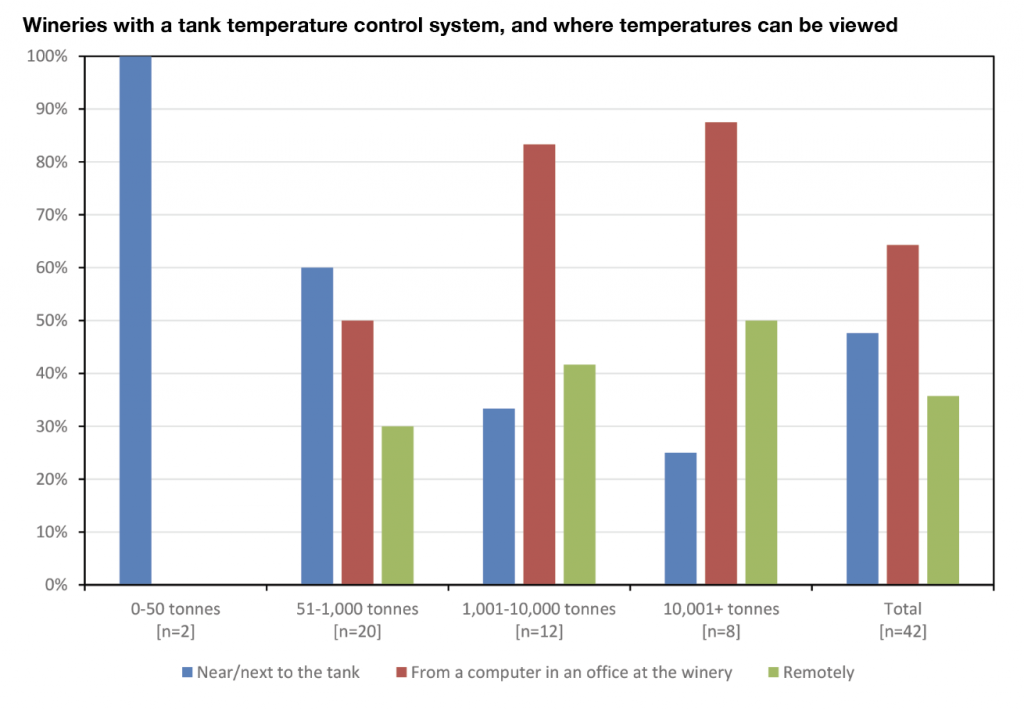
Juice/wine flow meter usage was another factor that increased in accordance with the size of the winery; 35% of 51-1,000t wineries used flow meters, increasing to 100% in 10,001t+ wineries. 21% of 51-1,000t wineries, 25% of 1,001-10,000t wineries, and 50% of 10,001t+ wineries had smart pumps (e.g. Rapidfil Cellar-Mate). Larger wineries were also more likely to have an automated yeast rehydrator. Very few wineries were using an automated oak contacting system yet (e.g. Pellenc Smart Oak).
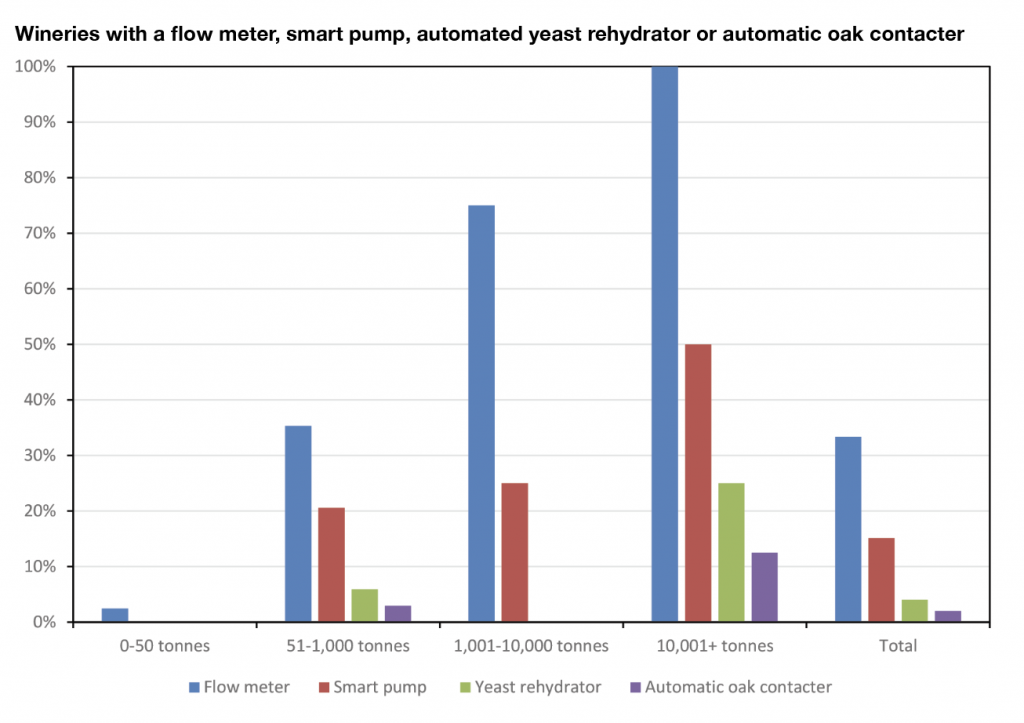
When asked to describe what specific tasks have been automated in their winery, temperature control was most commonly mentioned. However, respondents also listed a diverse range of other areas that were subjected to automation systems, including fermentation, filtration, barrel filling and cleaning, lab analysis, bottling and wastewater management. There was a large number of respondents who said that there was no automation within their winery – particularly in smaller wineries.
Impact of COVID-19
With pandemic restrictions having an effect on many workplaces, respondents were asked if working remotely had influenced what technologies were used or on their options for production equipment that’s to be purchased in the future. 78% said that COVID-19 has had no real impact on the choices they would make in future purchases. However, seven people (or 9% of respondents) reported that cash flow had been affected and that equipment purchases have had to be delayed as a result of the pandemic, and it is likely that many others that didn’t comment explicitly might be facing similar challenges. Four people (5% of respondents) revealed that they would like to better automate their processes, or would like to gain remote access so that they would be able to manage with fewer workers on site if similar circumstances were repeated. Two respondents who said they currently make wine at someone else’s winery, revealed they’d now like to build their own facility, while two people also mentioned items related to improving sales channels, such as wine club software.
Most of those surveyed said that they had not used any different tools or software as a consequence of COVID-19 restrictions. Although, among those that had adopted new software, video conferencing was the most commonly mentioned, using platforms such as Zoom, Teams, Blue Jeans, GoToMeeting and FaceTime. A small number of respondents also cited other vineyard or winery management software as having been useful for remote management.
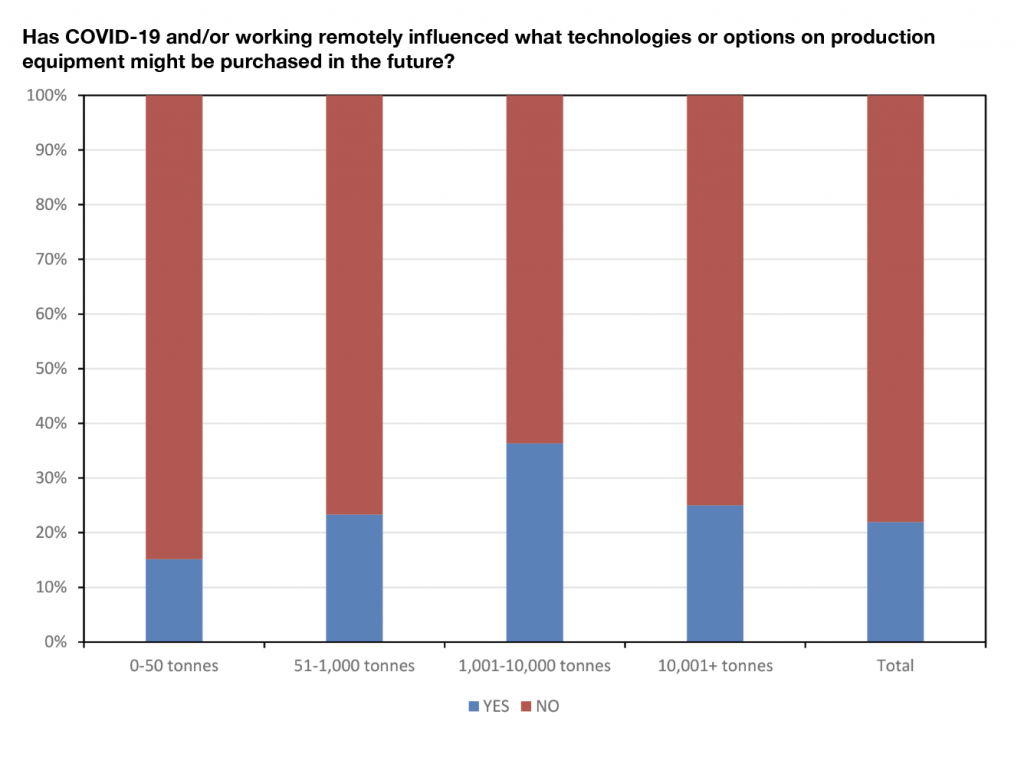
Most desired automation tasks
Overall, there was a wide range of winery tasks that respondents said they’d like to have automated at their site, with a number of these tasks shared by wineries of a similar size. Small to medium sized wineries expressed a desire for automation of refrigeration/cooling/temperature control systems, while medium to large sized wineries revealed that automation to improve barrel management or other transfers was needed, followed by red ferment mixing. Automating these processes was also of importance for the largest wineries.
These results could be a reflection of the priorities of wineries as they get bigger – the first automation task is temperature control, while the next concern is the automation of red ferment mixing, followed by barrel management and transfers, to the extent that automation can enhance these processes.
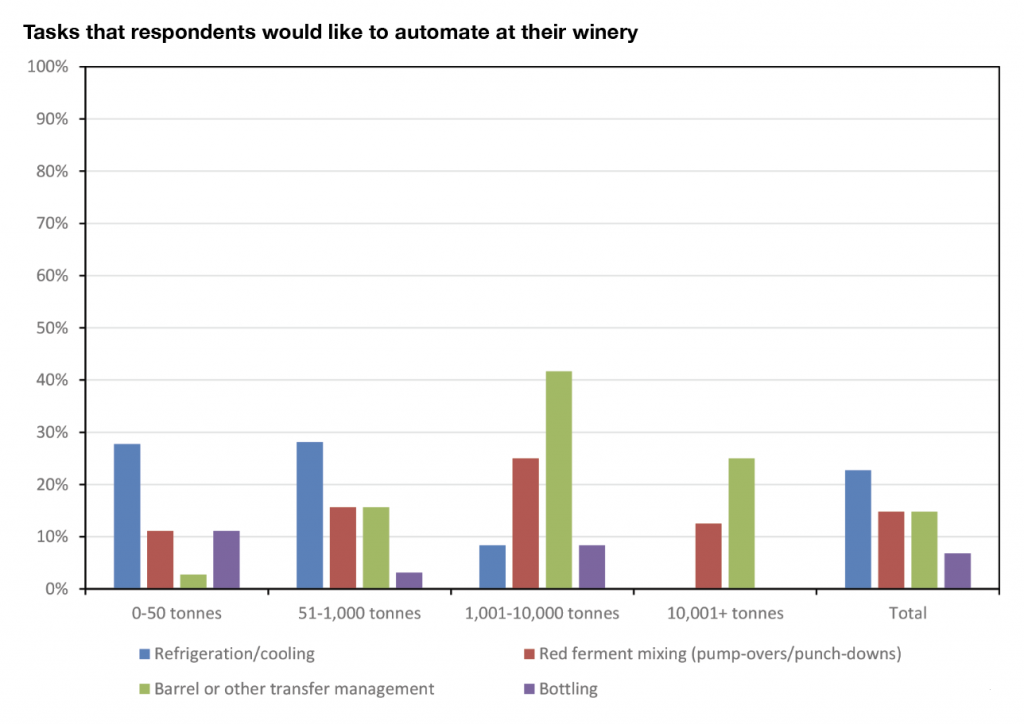
Watch the video version:
This free on-demand webinar is launched on 21 September 2020.
Register online here
This article was originally published in the September issue of The Australian & New Zealand Grapegrower & Winemaker. To find out more about our monthly magazine, or to subscribe, click here!
To view the current issue of the Grapegrower & Winemaker, click here.
Are you a Daily Wine News subscriber? If not, click here to join our mailing list. It’s free!
